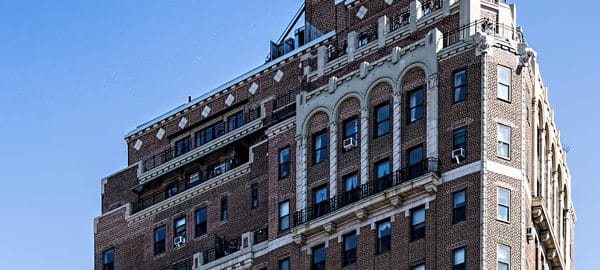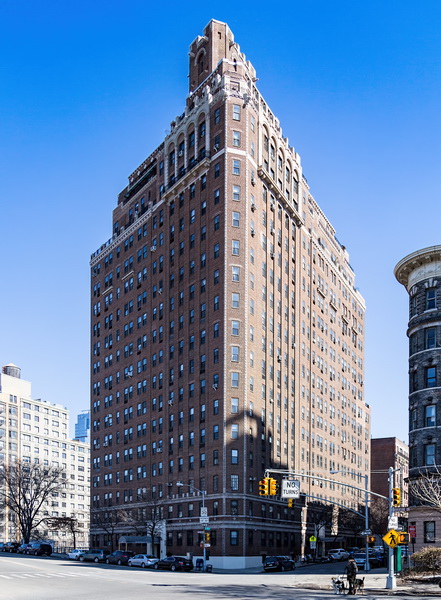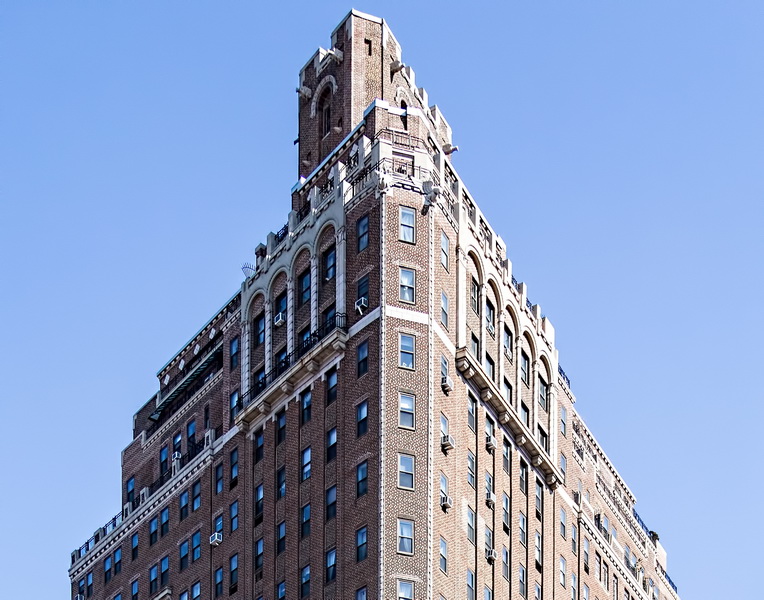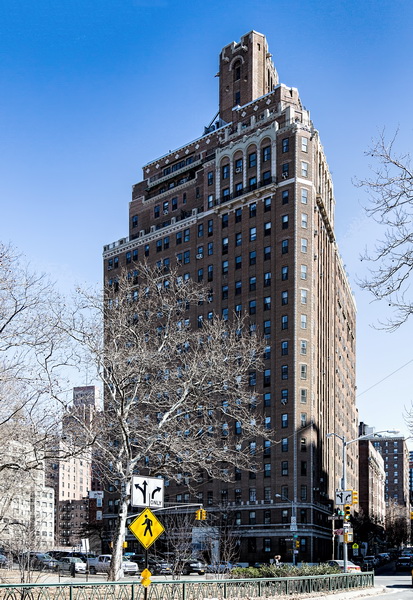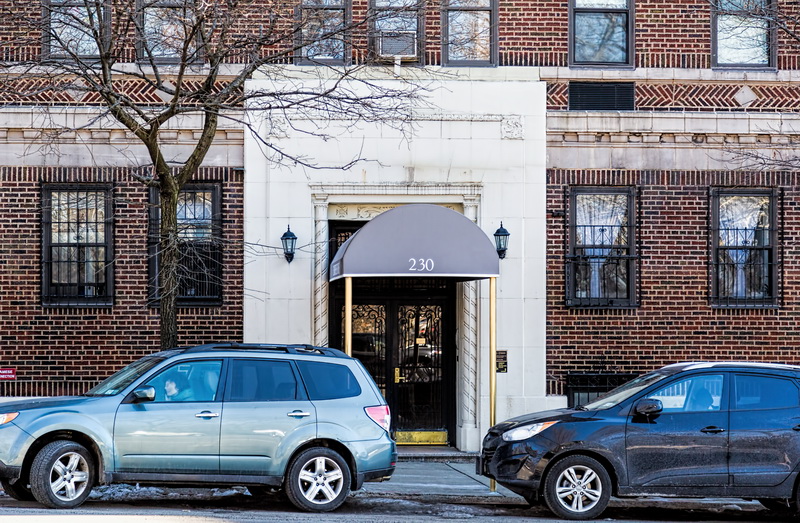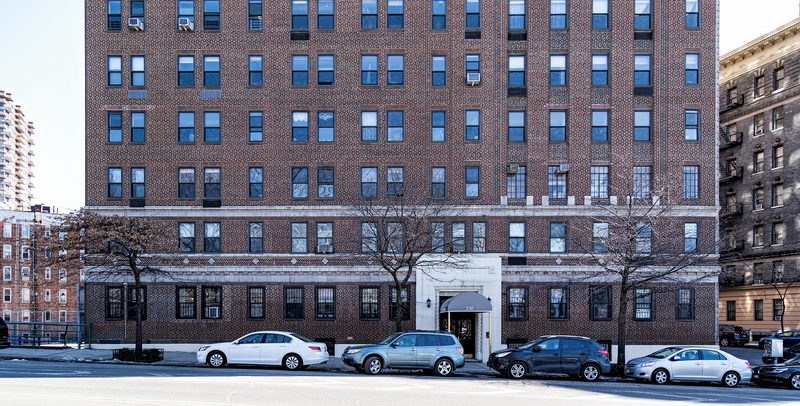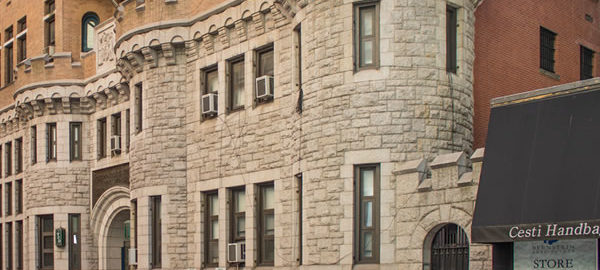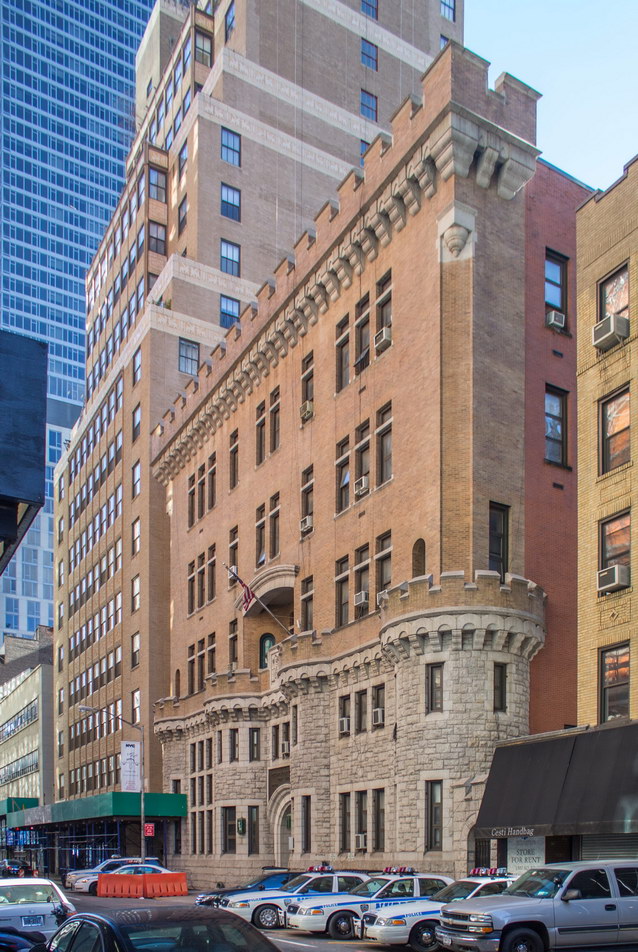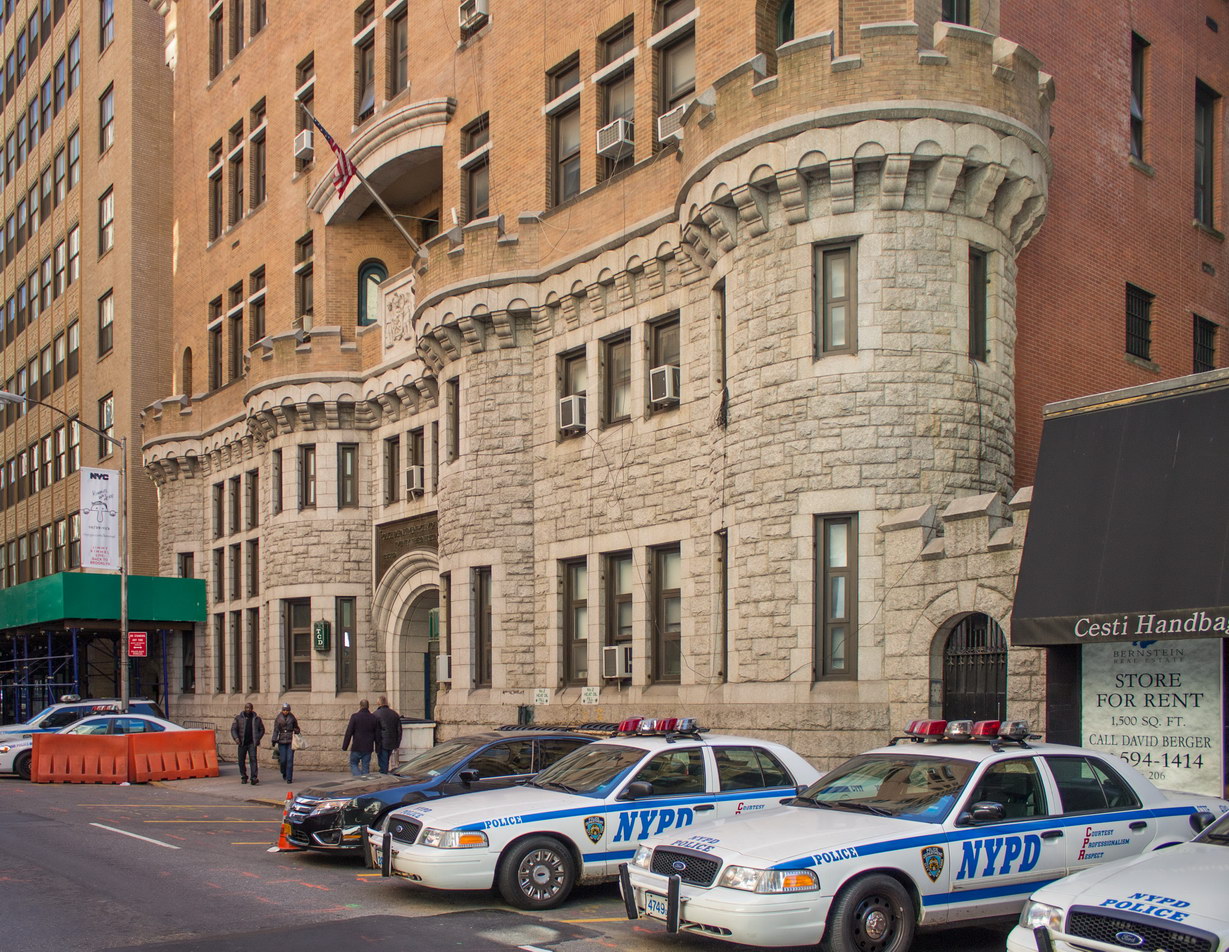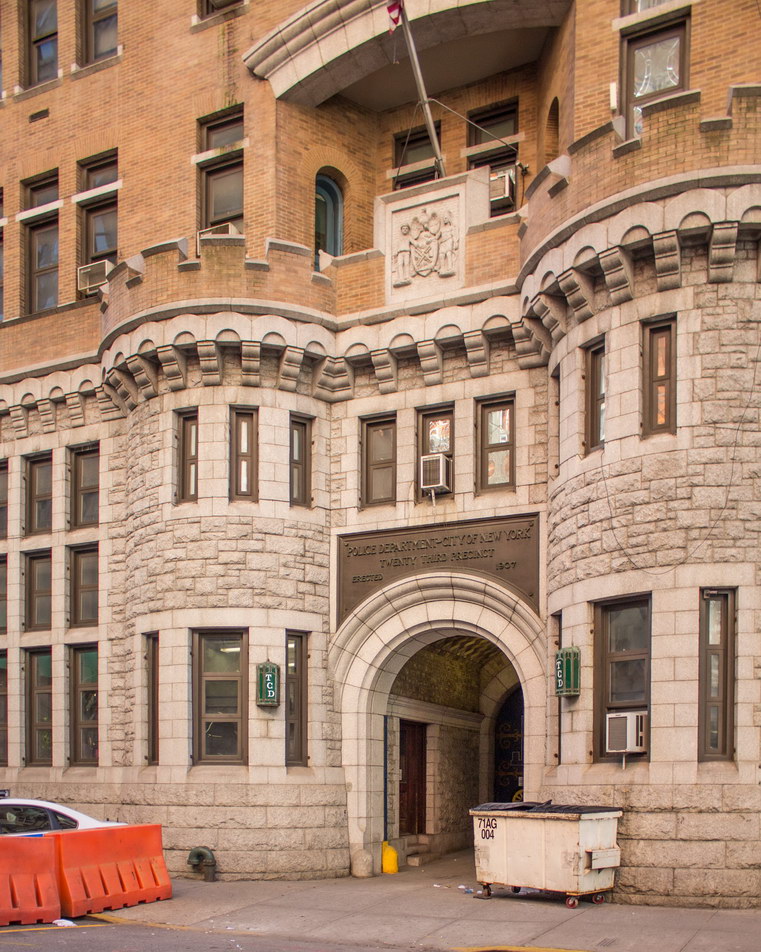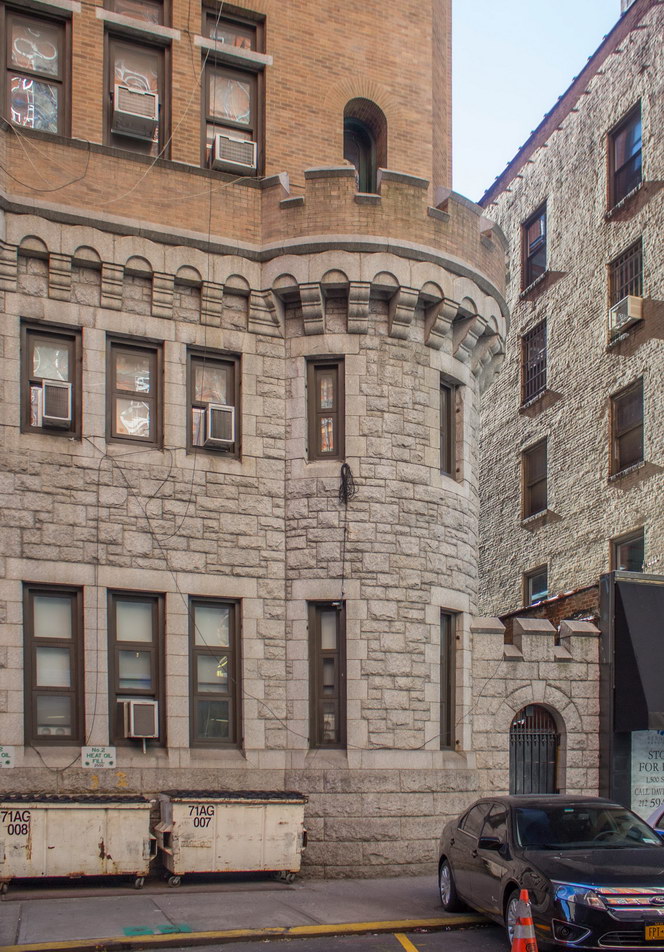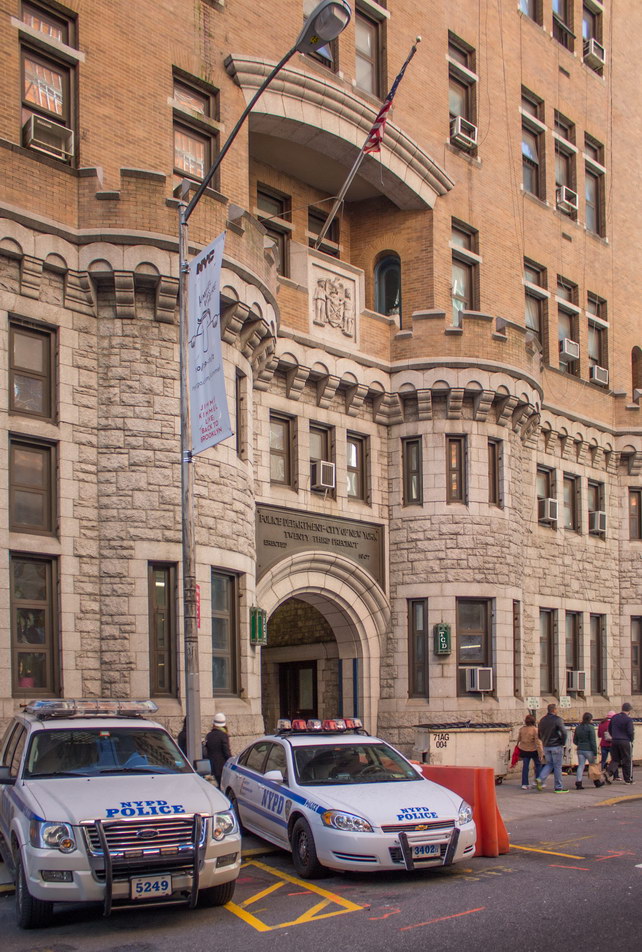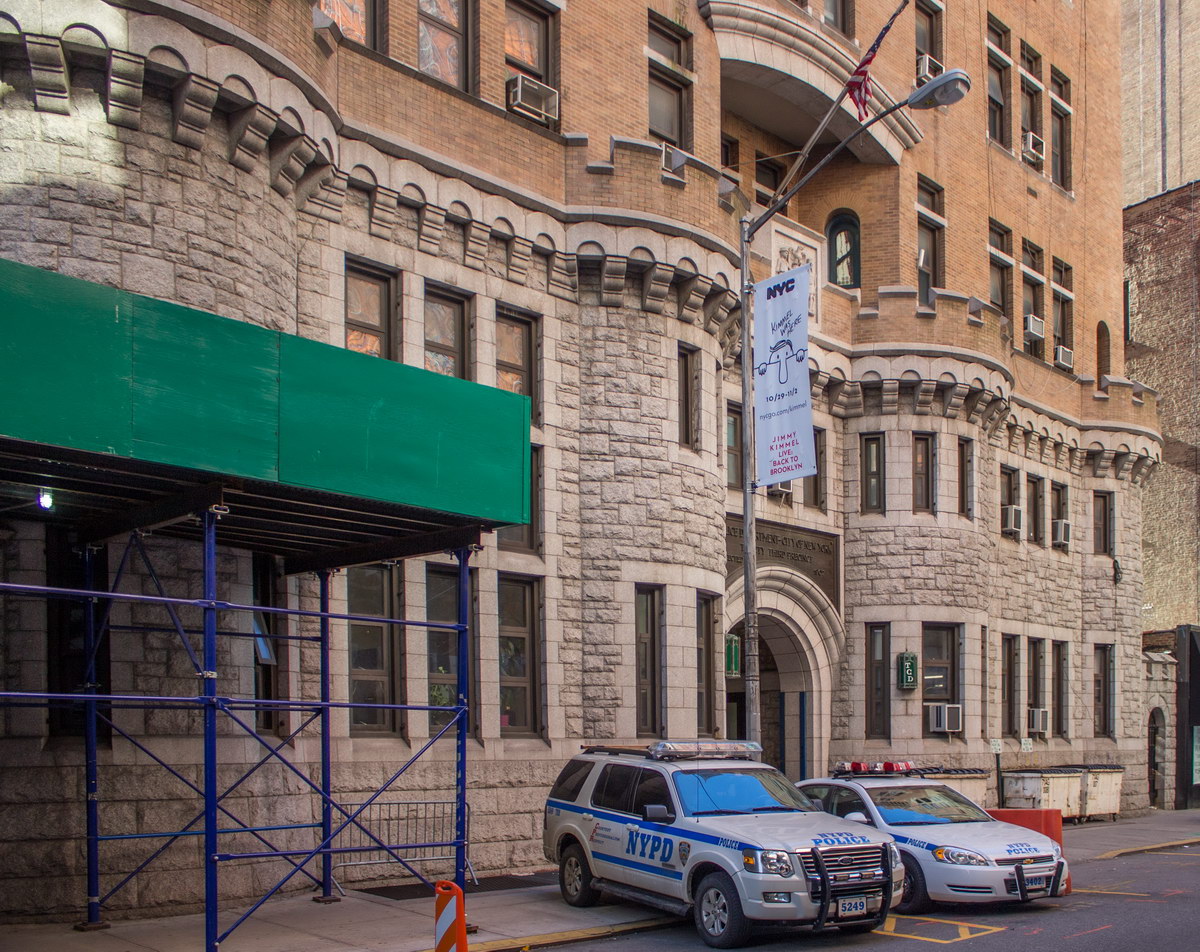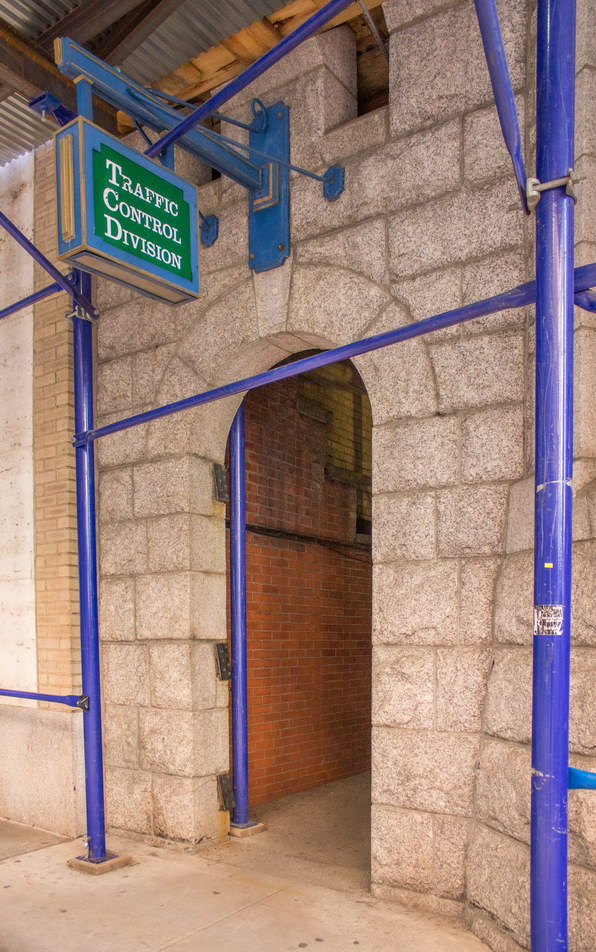230 Riverside Drive is relatively plain on its 15 lower floors, but blossoms above the setback with gargoyles, arcades and glass-canopied penthouse.
The landmarked building was converted to condominiums in 2004. According to Street Easy NY, the sponsor renovated the 268 units in three classes. High-end apartments were lavishly fitted with the finest appliances and amenities, including heated bathroom floors. Some units were renovated “in a more economical sense,” and some units were offered as “do-it-yourself” units.
However, under guidance of conversion architect H. Thomas O’Hara, the sponsor did preserve and restore the structure’s terra cotta.
While the facade’s style is Medieval Revival, the lobby is designed in Art Deco. It was last renovated in 2011.
230 Riverside Drive Vital Statistics
- Location: 230 Riverside Drive at W 95 Street
- Year completed: 1931; condo conversion, 2004
- Architect: Charles H. Lench; condo conversion, H. Thomas O’Hara
- Floors: 19
- Style: Medieval Revival
- New York City Landmark: 2015
230 Riverside Drive Recommended Reading
- NYC Landmarks Preservation Commission designation report (Riverside-West End Historic District Extension II, page 30)
- The New York Times If You’re Thinking of Living On/Riverside Drive; A Serene Setting Above the Hudson (October 1, 2000)
- Condopedia listing
- Street Easy NY listing
- City Realty review
- Emporis database
- 230 Riverside Drive condo website
